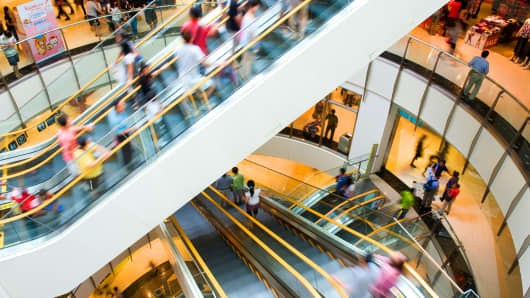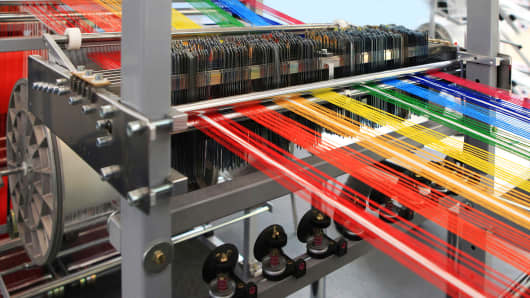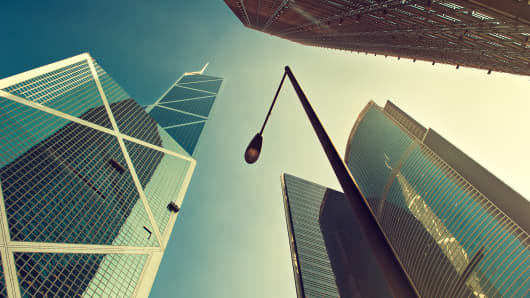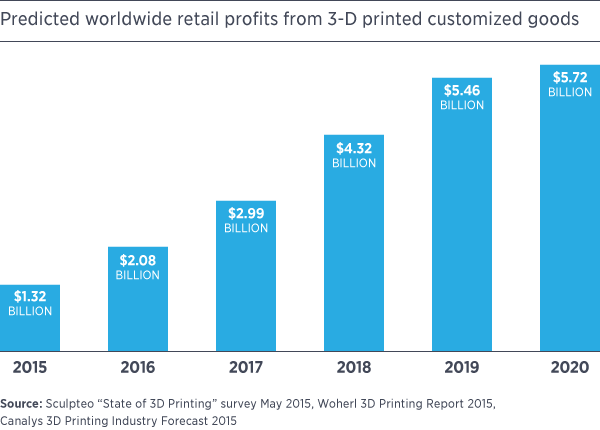"What’s really exciting is this curveball in the retail industry. We will go from the transition of knowing we want something and thinking it's available, to knowing we want something and getting exactly what we want. There will be a freedom of movement of thought."
The retail sector will change dramatically over the next two decades. With innovations such as delivery drones, 3-D printers, and virtual mirrors set to alter the way we shop, industry experts tell us how and why these changes are happening.
Customization in 3-D
"The shopper’s experience is evolving. In retail, the lines between manufacturing, retail, domestic and digital spaces are all becoming blurred and out of this, a new shopping culture will emerge."
3-D technology is already widely used in design and manufacturing but perhaps many of us don't realize it is set to play a huge role in retail, to give customers exactly what they want.
We think of 3-D software being used to design vehicles, buildings and infrastructure projects - but clothing? Fashion labels such as Julien Fournié have already conceived whole shoe collections using Dassault Systèmes' 3DEXPERIENCE platform.
Soon customers will also be tailoring their purchases using detailed 3-D screens – either holographic, or ones that appear flat with CGI graphics.
For the retailer, customization might seem an unnecessary complication, but in fact it could boost profits: customers expect to be able to return ill-fitting or unwanted purchases for free. The lost value of returned garments is estimated at $15.5 billion a year globally, according to research from Fits.Me, which makes virtual fitting rooms.
In manufacturing, 3-D printing is also growing. Firms like Amazon foresee vans which will travel to customers, printing items directly for them. Customers may also buy their own printers to create products at home.
3-D printing is a process for making a physical object from a three-dimensional digital model, most commonly using plastics but also other materials such as resins, metals and ceramics. 3-D printing can also produce objects using a combination of materials, such as a bicycle, ready assembled. Currently the process is used mainly in the medical field, but in the future it'll be particularly useful for printing items such as accessories.
As 3-D printing develops and becomes more affordable, the technology is set to radically challenge current "factory-based" manufacturing restrictions.
The store of the future
From concept to store
It's 2035. Amy Smith wants to buy some new clothes. We've already learnt she's likely to customize her goods, but how else will the production and sales process be different?
Changing spaces:
Will Amy shop at home? In a store? Or in a completely virtual space? Walls no longer define a retailer. Technologies are being developed that allow virtual stores to appear on mobile phones depending on the shopper's location. Retailers like Peak Performance are already testing this innovation.
If Amy does go to a store, her experience will be a world away from what we experience today. Susan Olivier, VP of Consumer Goods and Retail at Dassault Systèmes, whose software solutions are used by leading fashion brands and retailers to help them create winning consumer experiences, says: "Future stores will be like theatres of ideas with large, virtual walls and mirrors that sense and map the shoppers. Stores will be more like design studios."
Point of payment:
How will Amy pay? Well, it may be "telepathic!" The BBC (in collaboration with tech company This Place) has developed a way people can select TV shows using a brainwave-reading headset. Leading futurologist Dr James Bellini predicts that this same technology will one day be used in stores to allow people to pay, just by thinking about it.
Intelligent materials:
Amy's garment will be made of "smart" materials. Self-repairing fabrics fix small tears and holes in themselves, and they'll be used in many products – not just clothes - from mobile phone screens to nail varnish and shoes.
Future manufacturing:
Unlike much of today's manufacturing, Amy's customized clothing will probably be made in the country it's ordered, or even in-store. "Manufacturing is coming westwards, as China becomes more expensive. This helps with speed-to-market and helps retailers innovate to accommodate consumers' needs," says John Miln of UK Fashion & Textiles. If her garment is outsourced to China, it will be made by robots: China's robotics industry is set to be the fastest on Earth in the next 30 years, says Chinese textiles entrepreneur Wang Yanzhu.
The delivery process:
By 2020, drones will fly products directly to people's homes. Amazon is currently planning this type of delivery system with Prime Air. At the same time, with Google having recently bought eight robotics companies, some are speculating that they'll be developing robots that work with driverless vehicles to deliver goods.
Future retail profits
By 2020, 3-D printed products look set to add $5.72 billion to the global retail sector.











